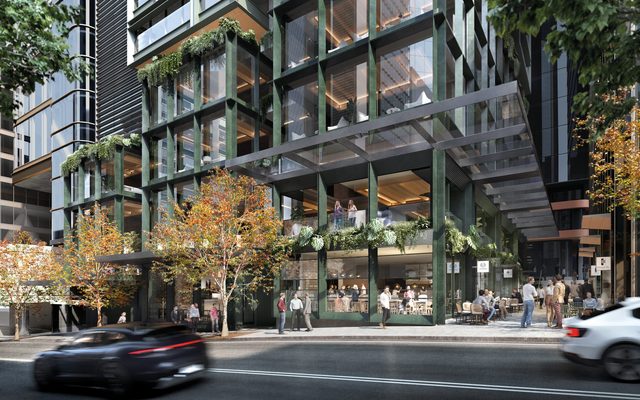This article is from the Australian Property Journal archive
AUSTRALIA will be the number one destination for cross-border capital in the Asia-Pacific’s commercial real estate market in 2024, led by office buildings as deal-making returns to the sector.
Knight Frank’s Horizon Report III – Look Beyond the Norm has 36% of total cross-border flows in the region in 2024 pinned to Australia, clearly ahead of Japan in second place (23%) and Singapore in third (11%).
Total cross-border investment into Australian commercial property is forecast to be US$10.2 billion (around AU$15.5 billion) over 2024, up from US$5.9 billion (about AU$9.01 billion in 2023.
“From an investor perspective, it’s that a sense of opportunity off the back of having seen a significant shift in market conditions, that it’s a more opportune time to get into the market,” Knight Frank chief economist Ben Burston told Australian Property Journal.
“There’s a structural dimension in the sense that there’s just a bit more stock available. And Australia is a big investment market, having seen a period of time where liquidity’s been quite constrained. We’re starting to see that adjust, whereas some of the other attractive centres in the Asia-Pacific region, such as Singapore, for example, are very tightly held and we don’t see much trading in those markets.”
Office and industrial will take the lion’s share of cross-border investment with 27% each, followed by the living sector at 20% and retail at 16%.
The Sydney CBD office market – “always top of the list for many investors” – will continue to be of particular attraction.
“I’d say Sydney is likely to be at the frontier of the recovery,” Burston said.
“Two years ago, if we think back to when interest rates were starting to adjust, Sydney felt some of the pressures a little bit sooner. But the flipside of that is that now we get positive sentiment starting to return. We start to see that pick up in trading activity and positivity in Sydney before we see it elsewhere.
“But before the market has fully recovered, there’s an opportunity to acquire Sydney assets with less competition than normal.”
Australia has already seen this year Mitsui Fudosan’s acquisition of a 66% stake in Mirvac’s $2 billion Sydney CBD development at 55 Pitt Street, which Knight Frank said highlights the continued interest of Japanese investors in Australian commercial assets, as well as reinforcing Australia’s position as a top destination for cross-border capital in the region.
“This pattern is expected to persist as Japanese firms continue their hunt for higher-yielding assets in overseas markets,” said Knight Frank global head of capital markets Neil Brookes.
Burston told Australian Property Journal that Brisbane is also a “very attractive” market.
“Whereas investors might have traditionally focused on Sydney and Melbourne, I think at the moment there’s a few more challenges in Melbourne.
“And Brisbane has seen stronger rates of growth in the office sector, for instance. And so, that’s viewed as a strong long-term growth prospect.”
Brisbane recorded the strongest office rental growth in the Asia Pacific over the 12 months to the end of March, according to Knight Frank.
Burston said there’s “more of a story of continuation” in the industrial and retail sectors, which hadn’t seen the same drop off in volumes and values.
“But it’s probably the office where we’ll see a bit more of a pickup and normalisation in activity. It won’t all happen at once, but we do expect over the next six months to sort of build on the pick-up in activity that we’ve seen over the past few months.”
Ongoing interest in living sector
“Given the undersupply of residential, we’d expect to see continued interest in living sectors,” Burston said.
Australia’s chronic undersupply of homes has put build-to-rent and purpose-built student accommodation developments as potential alleviators to demand pressures.
“It’s been hard to translate that into immediate activity because a lot of those sectors require development, so it’s not as easy to acquire standing investments in those sectors,” Burston said.
“It requires often more complicated transactions involving development, but given the tailwind supporting that sector, we’d expect to see continued interest there, both in the second half of the year and for the foreseeable future, really.”




